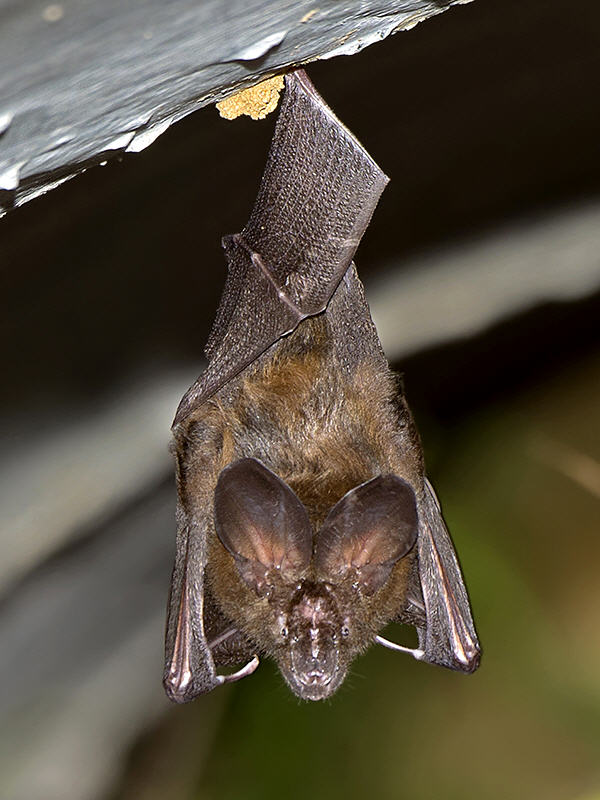 |
Order : CHIROPTERA
Family : Nycteridae
Species : Nycteris tragata
Forearm Length : up to 5.5 cm
Weight : up to 22 grams
Nycteris tragata (Malayan Slit-faced
Bat, Hollow-faced Bat) inhabits lowland
primary forest, hill and montane forest, and peat swamp forest. Known roosts
include hollowed-out fallen trees, rock crevices, caves and man-made
culverts. Roosts typically comprise small groups.
The diet of this medium-sized bat comprises large insects, such as moths and
crickets: rather than catch insects on the wing, it plucks or 'gleans' them
from surfaces including the ground. It probably locates such prey by
passively listening for faint noises.
Its fur is rich brown to light brown, with paler bases, and is long and
woolly in texture.
Its ears are long, rounded and
forward facing. Its simple 'noseleaf' comprises parallel skin flaps on
either side of a depressed groove that extends from the nose to between the eyes.
Its tail is long with a 'T' or 'Y' shaped cartilaginous tip, and this is fully enclosed in
the interfemoral membrane that stretches between its two legs. When
roosting, this membrane folds over and droops between its legs. Its wings
are broad and relatively short, which allows for highly maneuverable flight.
This species occurs in southern Myanmar, southern Thailand, Peninsular Malaysia, Singapore
(where it is extremely rare), Borneo and Sumatra.
One other closely-related species of slit-faced bat occurs in Southeast
Asia, namely Nycteris javanica, which occurs in Java and the Kangean
Islands of Indonesia. At least 10 other
Nycteris species occur in Africa.
Figs 1 and 2 : Example from a roost of 3 bats in lowland forest in southern
Peninsular Malaysia. The T-shaped cartilage at the tip of the tail membrane
can clearly be seen in Figure 1.
Fig 3 : Example from lowland, primary forest at Endau-Rompin National
Park, Peninsular Malaysia, found roosting in a road culvert along a rough
track. This posture illustrates how broad the wings are, compared to other
bats of similar body size.
Fig 4 : View of Sungai Endau, close to where the bat in Figure 3 was
encountered.
References :
Francis, C.M. 2019. A Field Guide to the Mammals of South-east Asia. Second
Edition. New Holland. 416 pp.
Kingston, T., Lim B.L., Zubaid, A., 2006. Bats of Krau Wildlife
Reserve. Universiti Kebangsaan Malaysia.
Kingston, T. & Meijaard, E. 2008. Nycteris tragata. The IUCN
Red List of Threatened Species 2008: e.T14937A4480733
|